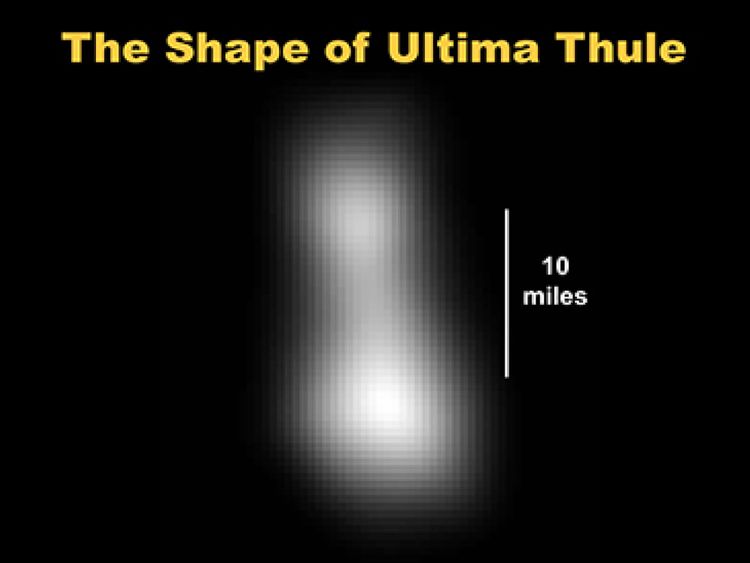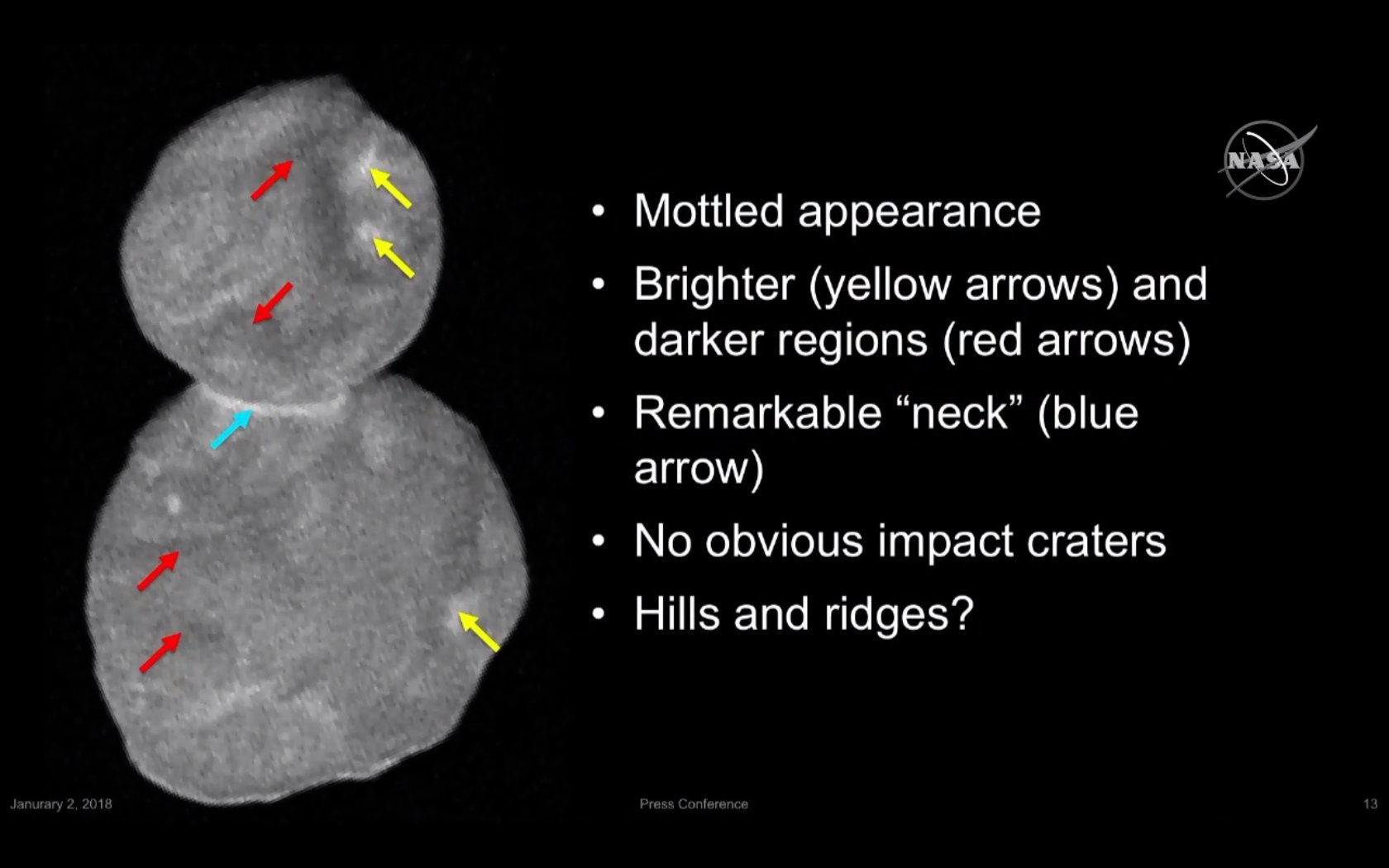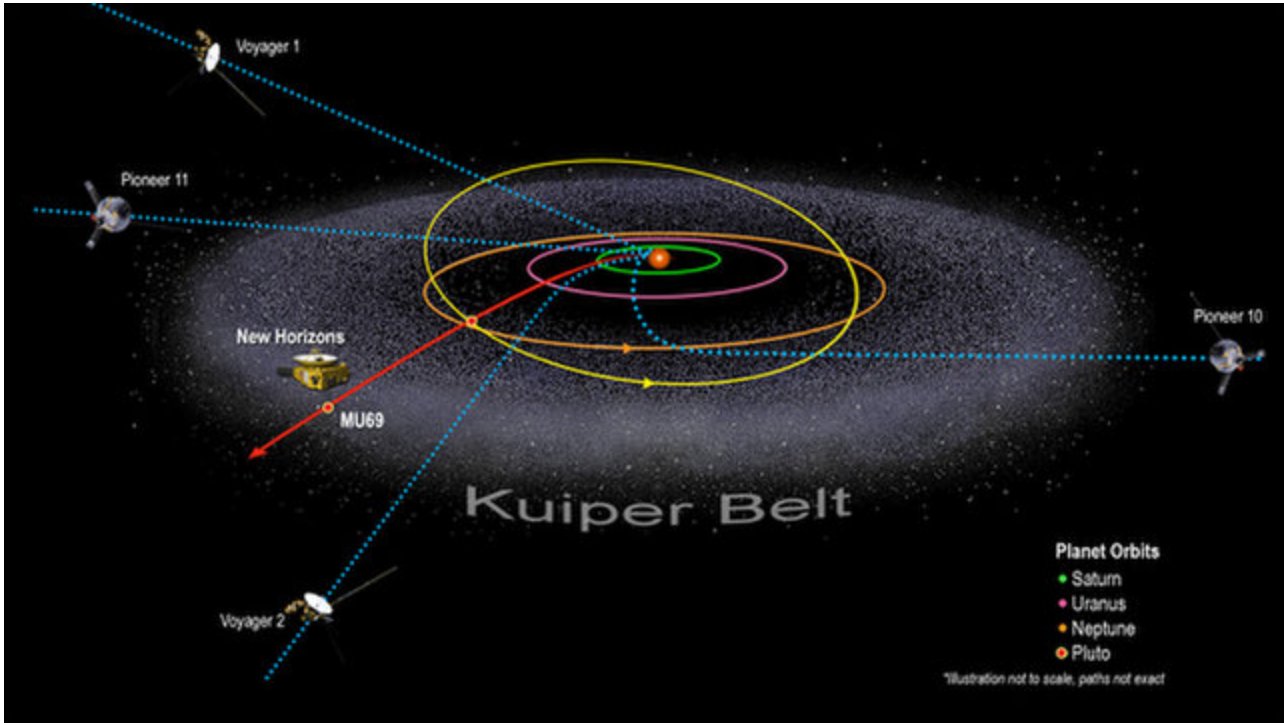Just 33 minutes past midnight on January the first here on the US East Coast NASA’s New Horizons space probe made it’s closest approach to the Kuiper belt object 2014 MU69 better known by it’s unofficial nickname Ultima Thule. The Ultima Thule flyby comes three and a half years after New Horizons hugely successful mission to Pluto back in 2015 and was actually added on to the original Pluto mission because New Horizons was in such good shape that a flyby of Ultima Thule seemed possible.

In fact Ultima Thule was not even discovered until 2014, eight years after New Horizons had been launched back in January of 2006 so the flyby represents the first time that a space probe has visited a world that wasn’t discovered until after the probe was launched.
Ultima Thule is so far away, 6.5 Billion kilometers, that even traveling at the speed of light it wasn’t until 10:30 the next morning that the scientists at the Applied Physics Laboratory (APL, which manages the space probe for NASA) received the signals telling them that New Horizons had successfully carried out the mission. At that distance the rate at which New Horizons’ transmitter can send back the data it collected is also very low, only 1 kilobyte per second. In fact it will take 20 months for New Horizons to send all of its discoveries back to Earth.
However, knowing how anxious the public was to see some results the scientists at APL quickly published a rough first image; see below, which showed an obviously bilobed object some 30 km by 15 km. It wasn’t until a press conference the next day (January 2nd and which I just finished watching) that we started getting some real information about just what kind of world Ultima Thule is.

Looking at the first Hi-Resolution image below it is apparent that Ultima Thule is actually two roughly spherical objects that have come together very gently, with no sign of anything like a collision. The team at APL has decided to name the larger, lower ball Ultima and the smaller upper ball Thule.

The physical configuration of Ultima Thule has indicated to APL scientists, led by program manager Alan Stern, to suggest that Ultima Thule formed 4.5 billion years ago exactly as we see it today. Indeed it is thought that back when the solar system was forming there were literally million of small objects very similar to Ultima Thule all the way from where Mercury is now to beyond where Ultima Thule. In the inner solar system those ‘planetoids’ came together to form the planets. Beyond Pluto however the planetoids were so few and the distance between them so great that many remained just as they were, as Ultima Thule is now. The basic idea of how Ultima Thule formed is show in the image below.

The first Hi-Res pictures are capable of resolving features on Ultima Thule down to a size of about 150 m but with more data coming in the scientists hope to be able to increase the resolution down to about 40 m or maybe even a little smaller. Nevertheless there are already some features that are clearly seen in the first images, see below. The scientists at APL are especially interest in the ring around where the two lobes meet. By the way the new Hi-Res images have also enabled the scientists to determine that Ultima Thule rotates about once every 15+1 hours.

Now the Hi-Resolution camera on board New Horizons is strictly black and white but we can produce a colour image of Ultima Thule because the data from a low-resolution colour camera can be used to colourize the Hi-Res picture. The image below illustrates how this is done and it turns out that Ultima Thule is reddish in colour.

In the days to come we’ll be learning more about Ultima Thule as more and more of the data from New Horizons comes in. The probe itself is of course still going, heading out of the solar system following a path set out by the Pioneer and especially the Voyager space probes. The scientists at APL hope that like the Voyagers New Horizons will continue to send back data for 20 or more years, teaching us even more about what is beyond our solar system. See image below.

Before I go, since this is my first post of 2019 I’ll like to take just a moment to recapitulate 2018 for Science and Science Fiction. There were 102 published posts in all, that’s nearly two every week. 87 posts dealt with science while 14 dealt with SF and there was one post that dealt with the blog itself.
The visitor statistics for Science and Science Fiction improved steadily throughout 2018, thank you all very much. Starting at a little under 500 visits per day in January by December the number of daily visitors had risen to 1400, an increase of about 280%!!
The number of registered subscribers also rose to a total of 8,952. And the people who come to visit or subscribe live throughout the world. Seriously everyday I get comments from places like China or Germany or Hungary or just about any country you’d care to name.
All I can say is that I appreciate all of you who come to my blog in order to learn more about Science and Science Fiction! Thanks again!
